Types of White Hydrangeas: A Comprehensive Guide
White hydrangeas are a popular choice for gardeners looking to add a touch of elegance to their outdoor space. These plants will make a statement in any landscape with their large, showy blooms and lush foliage. It is possible to grow several varieties of white hydrangeas, each with its own unique characteristics and needs.
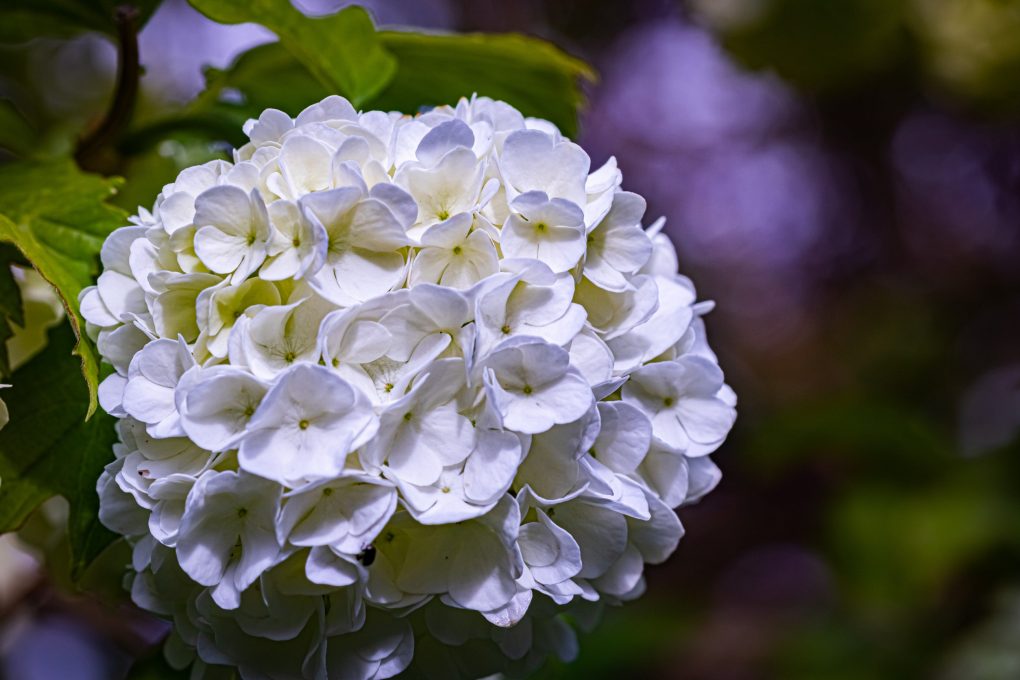
One of the most popular types of white hydrangeas is the smooth hydrangea, also known as Hydrangea arborescens. This variety is known for its large, round flower heads and ability to thrive in various growing conditions. Another popular choice is the panicle hydrangea, or Hydrangea paniculata, which is prized for its cone-shaped flower clusters and ability to tolerate full sun.
Whether you’re a seasoned gardener or just starting, there’s a white hydrangea variety that’s sure to meet your needs. From the classic mophead blooms of the bigleaf hydrangea to the delicate lace-cap flowers of the oakleaf hydrangea, there’s no shortage of options. You can create an impressive display of white hydrangeas with a little research and careful planning.
Table of Contents
Understanding White Hydrangeas
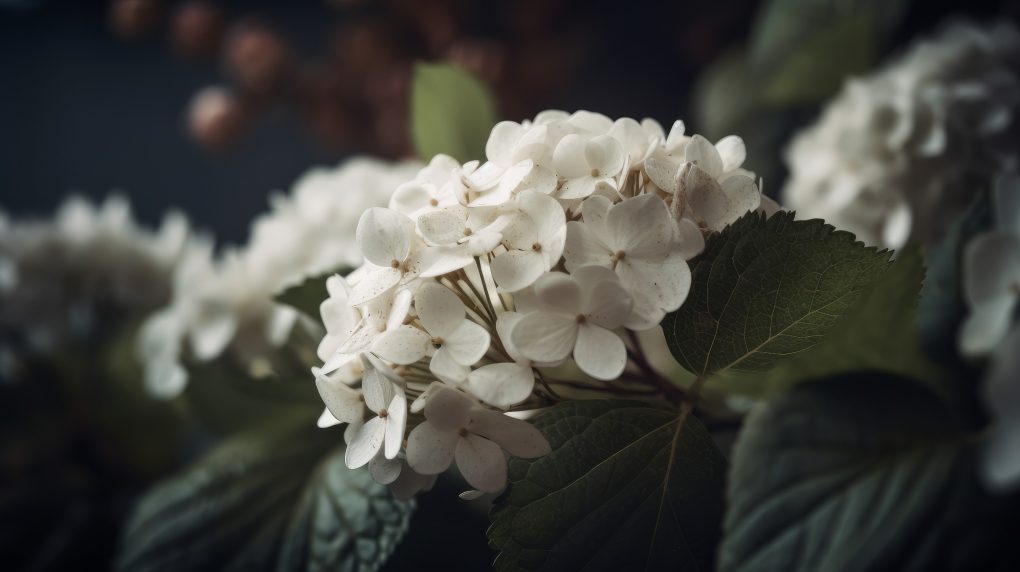
White hydrangeas are popular for gardeners due to their stunning, elegant blooms. Understanding the different types of white hydrangeas can help you choose the right variety for your garden.
What are White Hydrangeas?
White hydrangeas are a type of flowering shrub that produce beautiful white blooms. They are known for their large, showy flowers ranging in size from small and delicate to large and bold. White hydrangeas are a popular choice for gardens due to their versatility and ability to thrive in various growing conditions.
Types of White Hydrangeas
There are several white hydrangeas to choose from, each with unique characteristics and growing requirements. Here are some of the most popular types of white hydrangeas:
| Type of White Hydrangea | Description |
| Hydrangea anomala petiolaris | A climbing hydrangea with white lacecap blooms that can grow up to 50 feet tall |
| Hydrangea arborescens ‘Annabelle’ | A popular smooth hydrangea with large, round white blooms |
| Hydrangea macrophylla ‘Blushing Bride’ | A mophead hydrangea with white blooms that fade to pink |
| Hydrangea paniculata ‘Limelight’ | A panicle hydrangea with lime green blooms that turn white as they mature |
| Hydrangea quercifolia | An oakleaf hydrangea with white cone-shaped blooms that turn pink as they age |
When choosing a white hydrangea, consider the size of your garden, the growing conditions, and the type of bloom you prefer. With so many options, you will surely find a white hydrangea that will thrive in your garden and provide beautiful blooms for years.
Popular Varieties of White Hydrangeas
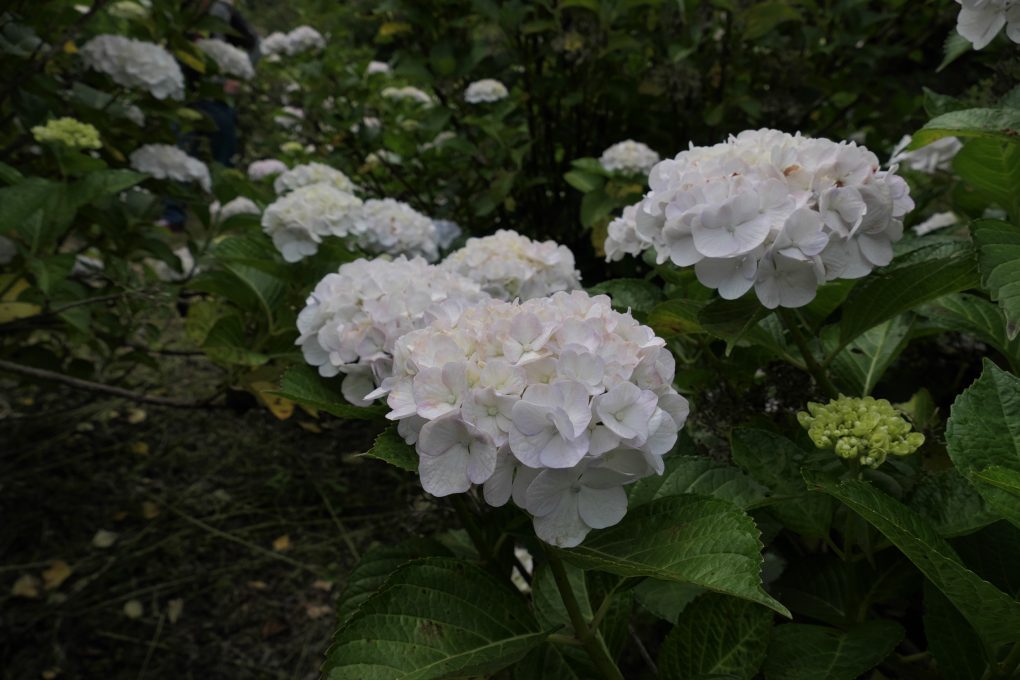
White hydrangeas are popular for gardeners due to their elegant and timeless beauty. Here are some of the most popular varieties:
Annabelle Hydrangea
The Annabelle hydrangea is a classic white hydrangea with large, round blooms. It is a deciduous shrub that can grow up to 5 feet tall and wide. The flowers start green and gradually turn white as they mature. Annabelle hydrangeas prefer partial shade and well-drained soil.
Limelight Hydrangea
The Limelight hydrangea is a stunning white hydrangea with cone-shaped blooms that start green and turn white as they mature. This deciduous shrub can grow up to 8 feet tall and wide. Limelight hydrangeas prefer full sun to partial shade and well-drained soil.
PeeGee Hydrangea
The PeeGee hydrangea is a white hydrangea with pyramid-shaped blooms that start white and turn pink as they mature. This deciduous shrub can grow up to 15 feet tall and wide. PeeGee hydrangeas prefer full sun to partial shade and well-drained soil.
Snow Queen Hydrangea
The Snow Queen hydrangea is a white hydrangea with dome-shaped blooms that start green and turn white as they mature. This deciduous shrub can grow up to 6 feet tall and wide. Snow Queen hydrangeas prefer partial shade and well-drained soil.
Caring for White Hydrangeas
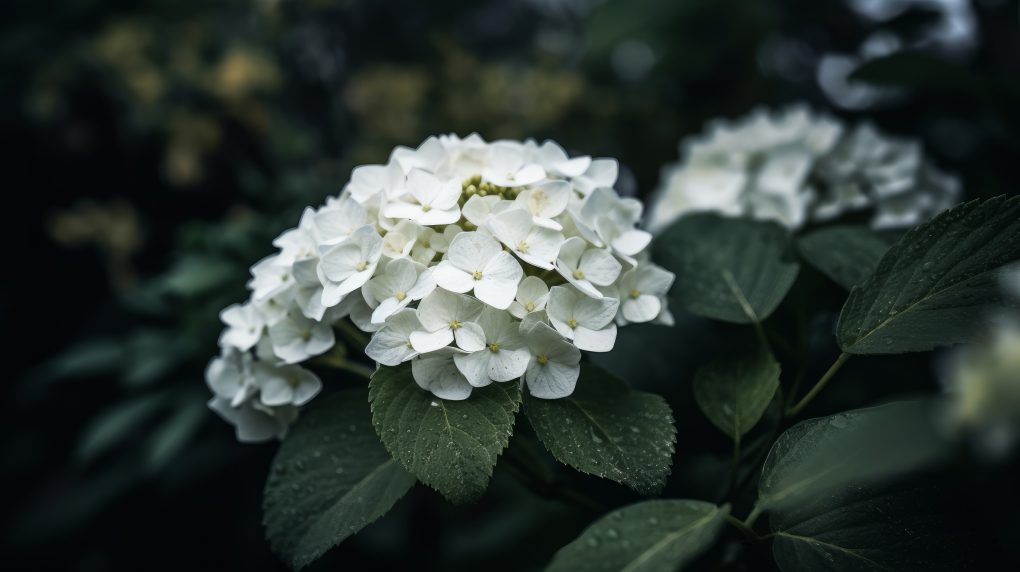
Planting White Hydrangeas
White hydrangeas prefer well-draining soil with a pH between 6.0 and 7.5. They also need partial shade, especially in the afternoon, to prevent their delicate flowers from scorching in the sun. It’s best to plant them in the spring or fall when the temperatures are cooler and the soil is moist.
To ensure proper planting, dig a hole that is twice as wide as the root ball and just as deep. Enhance the soil’s texture and drainage by adding compost or peat moss. After placing the plant in the hole, refill it with soil and water thoroughly. To retain moisture and prevent weed growth, add mulch around the base of the plant.
Watering and Fertilizing White Hydrangeas
It is crucial for white hydrangeas to have consistent moisture throughout the summer. Depending on the weather and the soil, water deeply once or twice a week. Avoid watering the leaves and flowers, which can promote fungal growth.
A slow-release granular fertilizer formulated for acid-loving plants should be applied in the spring to white hydrangeas. Using too much fertilizer can damage the roots and burn the foliage.
Pruning White Hydrangeas
White hydrangeas bloom on old wood, meaning the flower buds form on the previous year’s growth. Pruning at the wrong time can remove these buds and reduce or eliminate the plant’s blooms.
Only prune white hydrangeas in the late winter or early spring before new growth appears. Remove any dead or damaged wood and any weak or crossing branches. You can also selectively prune to control the plant’s size and shape.
For smooth hydrangeas like ‘Annabelle,’ cut back the stems to 6-12 inches from the ground. For panicle hydrangeas, such as ‘Limelight,’ remove the oldest stems to promote new growth from the base of the plant. For oakleaf hydrangeas, such as ‘Snow Queen,’ only prune to remove dead wood and shape the plant.
Common Problems with White Hydrangeas
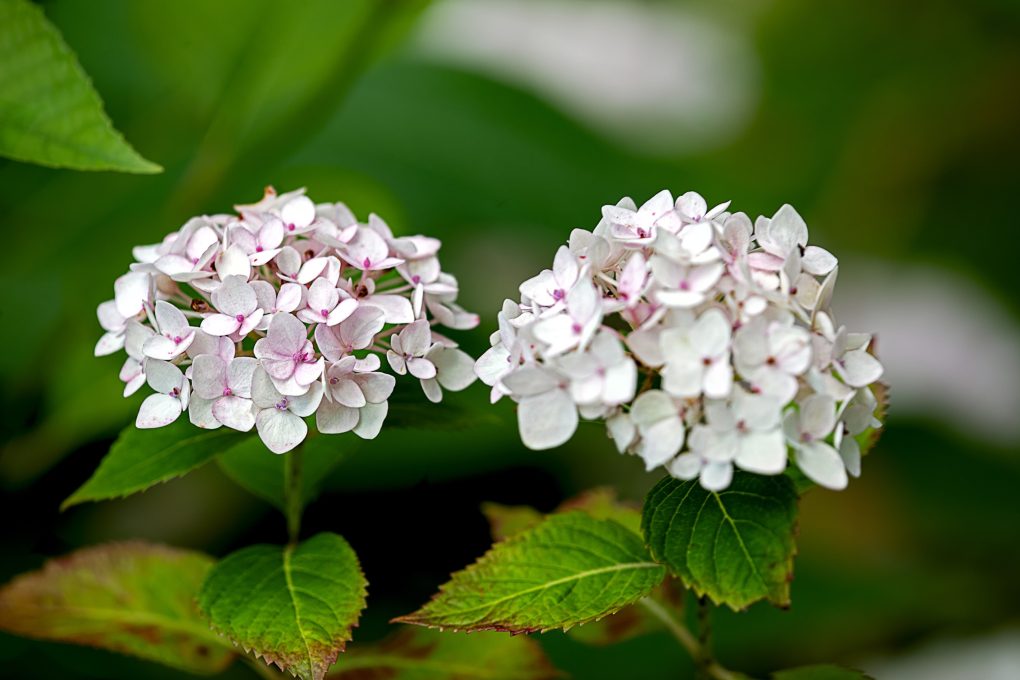
As with any plant, white hydrangeas are susceptible to a wide range of problems. Here are some common problems that gardeners may encounter when growing white hydrangeas.
Pests
Pests can be attracted to white hydrangeas, including aphids, spider mites, and whiteflies. They can damage the leaves and flowers of a plant, and even kill it if left untreated. Gardeners can also control these pests with insecticidal soaps or neem oil.
Diseases
White hydrangeas can be susceptible to various diseases, including powdery mildew, rust, and leaf spot. Powdery mildew is a fungal disease that can cause a white powdery coating on the leaves, while rust can cause orange spots. Leaf spot can cause brown spots on the leaves. Gardeners can use fungicides to control these diseases.
Environmental Factors
White hydrangeas can be sensitive to environmental factors like temperature and moisture. If the plant is exposed to too much sun or too little water, it may wilt or develop brown spots on the leaves. Gardeners should ensure that the plant is planted in a location that is suitable for its needs, and that it is watered regularly.
